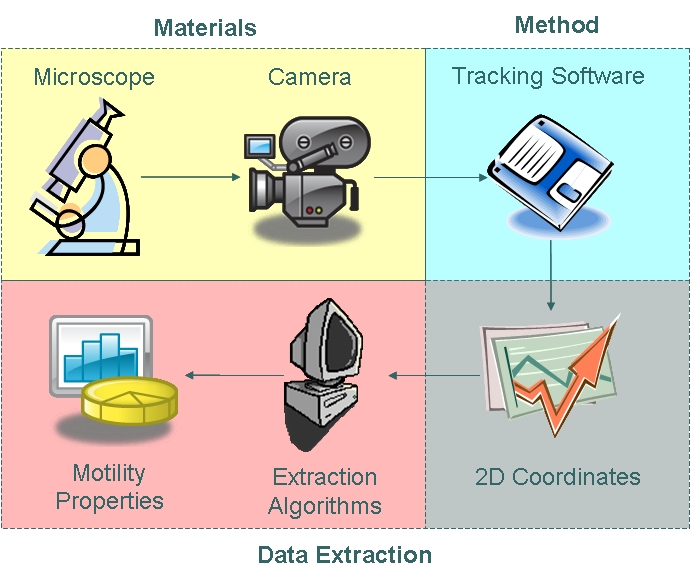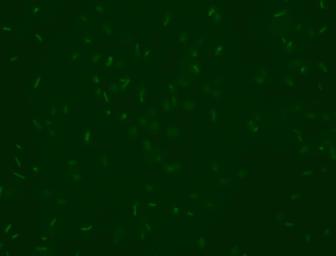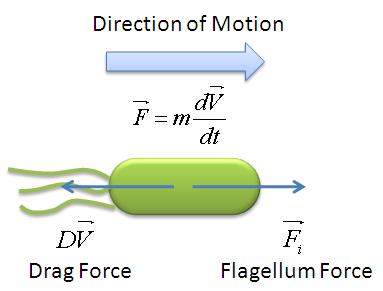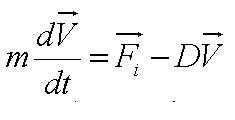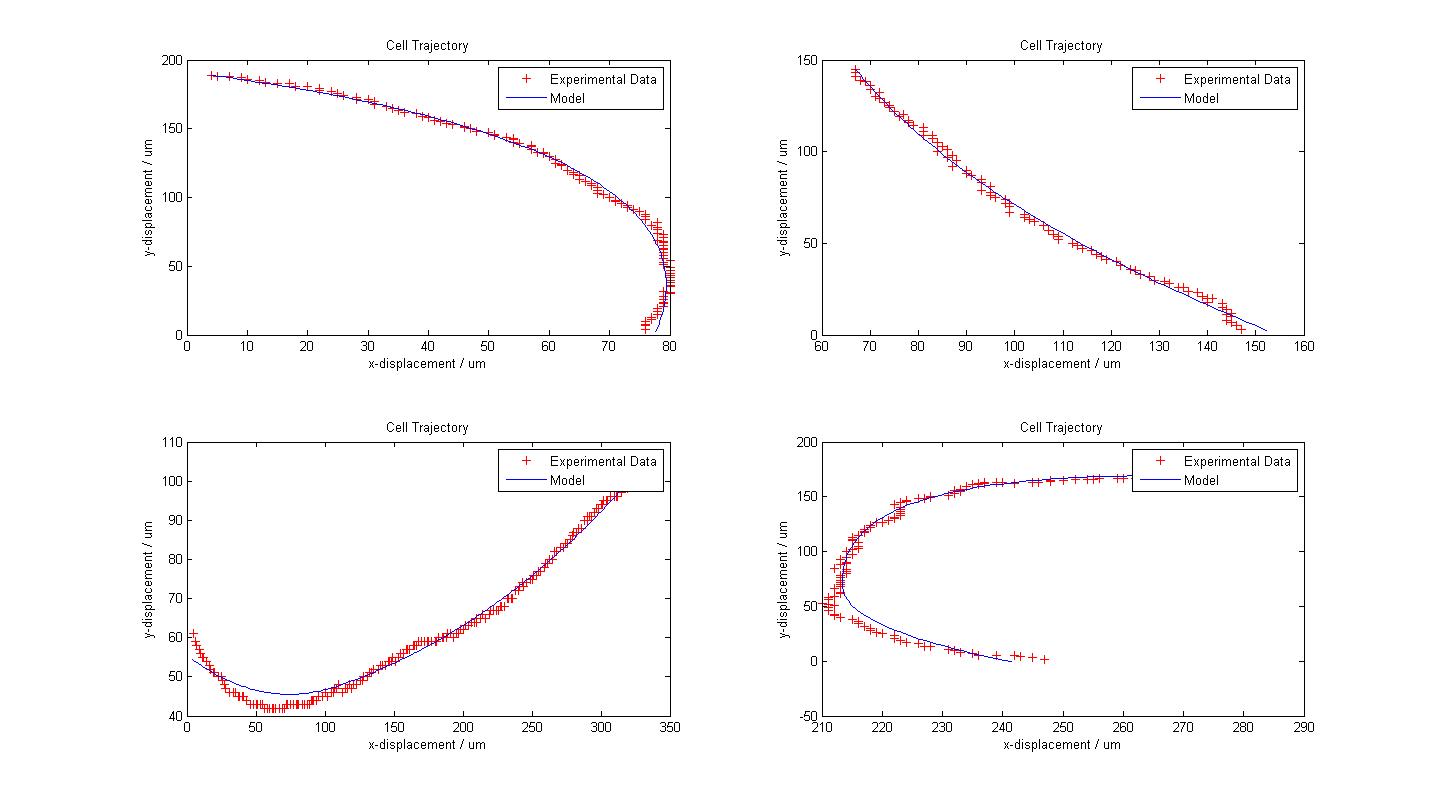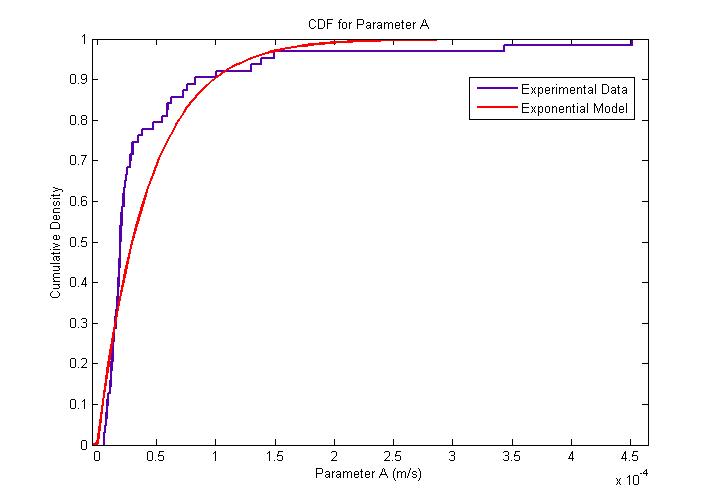Team:Imperial College/Motility
From 2008.igem.org
| Line 43: | Line 43: | ||
*Parameter ''A'' is the ratio of flagellar force to medium viscosity. It also represents the velocity of the cell after a sufficiently long time has elapsed, given that the flagellar force remains constant throughout its run. | *Parameter ''A'' is the ratio of flagellar force to medium viscosity. It also represents the velocity of the cell after a sufficiently long time has elapsed, given that the flagellar force remains constant throughout its run. | ||
| - | *Parameter ''B'' is the initial cell velocity - in practice the velocity as we started to track the cell | + | *Parameter ''B'' is the initial cell velocity - in practice, the velocity as we started to track the cell |
| - | *Parameter ''alpha'' is the ratio of the viscosity to the cell's mass. | + | *Parameter ''alpha'' is the ratio of the medium viscosity to the cell's mass. |
As is widely known, the movement of bacteria is not that simple. Many bacteria have two distinct modes of movement: forward movement (swimming) and tumbling ({{ref|1}}). Tumbling allows them to reorientate, thus making their movement a three-dimensional random walk. | As is widely known, the movement of bacteria is not that simple. Many bacteria have two distinct modes of movement: forward movement (swimming) and tumbling ({{ref|1}}). Tumbling allows them to reorientate, thus making their movement a three-dimensional random walk. | ||
| Line 50: | Line 50: | ||
Our mechanical model can be used to analyse the swimming movement of bacteria with a few extra assumptions: | Our mechanical model can be used to analyse the swimming movement of bacteria with a few extra assumptions: | ||
*The medium is homogenous and its viscosity is constant throughout the medium. | *The medium is homogenous and its viscosity is constant throughout the medium. | ||
| - | *The swimming movement is made of a finite number of trajectories that can be modelled with our mechanical model. Such an assumption corresponds to the idea that the bacteria's flagellum propels it in a constant direction for a certain period of time and then propels in a different direction with a different force, for another period of time and so on. | + | *The swimming movement is made up of a finite number of trajectories that can be modelled with our mechanical model. Such an assumption corresponds to the idea that the bacteria's flagellum propels it in a constant direction for a certain period of time and then propels in a different direction with a different force, for another period of time and so on. |
*The movement of the bacteria is very smooth, which indicates continuity of its position and velocity. | *The movement of the bacteria is very smooth, which indicates continuity of its position and velocity. | ||
<br> | <br> | ||
Revision as of 23:52, 29 October 2008
Motility Analysis
|
|||||||||||||||||||||||||||||
 "
"

